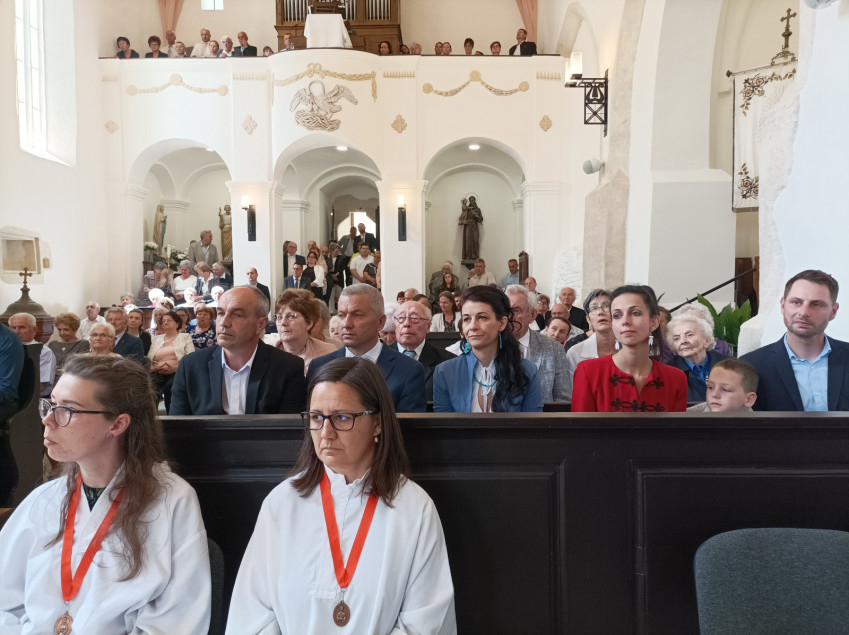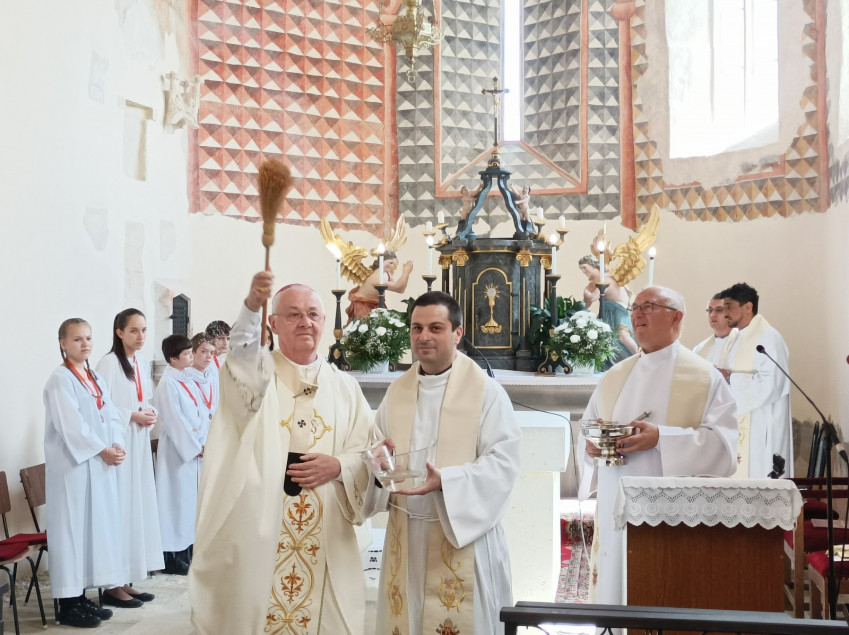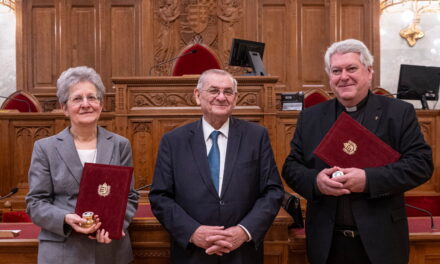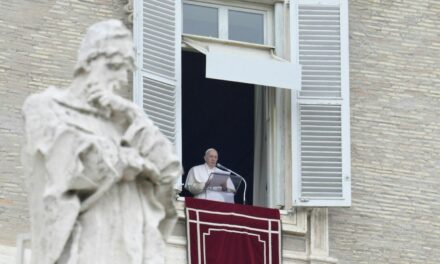The 800-year-old church was blessed and consecrated by Archbishop Csaba Ternyák of Eger at noon on Saturday, May 28, after the renovation and the official handover on March 15.
Ferenc Kertész greeted the head pastor and the faithful Csaba Ternyák talked about how the truest decoration of a church is when it is full of believers.
The chief pastor blessed the church and consecrated the altar.
In his speech, he said: God wants man's joy, He and Jesus send their Spirit, this is the greatest gift.
At the end of the holy mass Zsófia Koncz , the representative of the region, Tokaj-Hegyalja, also greeted the archbishop and the Bodrog parish. He said that as the country of St. István, we can be proud that we are still building and renovating churches today.

Source: Hungarian Courier
The church of Bodrogkeresztúr was built around 1220, it is the oldest building in the settlement. In the past two years, both the exterior facade and the interior wall surface were renovated, and the building needed to be statically reinforced, which consisted of sheet reinforcement and wall seaming of the vault. In the course of the renovation, the roof structure was strengthened and water leaks were eliminated, the tile shell was partially replaced, a new tin roof was made on the tower, new doors and windows were partially made based on the existing doors and windows, and these were restored.
The painter restorers during the wall research
after the demolition of an earlier altar, medieval wall paintings of unparalleled value were found. Their age is 15-16. century. There are three full-figured saints on the walls, and medieval details and other figural fragments were found on the triumphal arch, as well as a year, which is of unparalleled importance in the history of church construction.
It is almost impossible to find such a wall formula in Hungary in such good condition, it has an unparalleled artistic value.
In order for the comprehensive monument restoration of the church to take place, these murals had to be restored. The unique art historical treasure depicts St. Catherine and St. Nicholas, and the third picture depicts St. Ambrose. Several art historians were asked to decipher the latter depiction. The restoration of the pictures Éva Fabó, Klára Nemessányi and Péter Boromisza .
Source and featured image: Magyar Kurír













